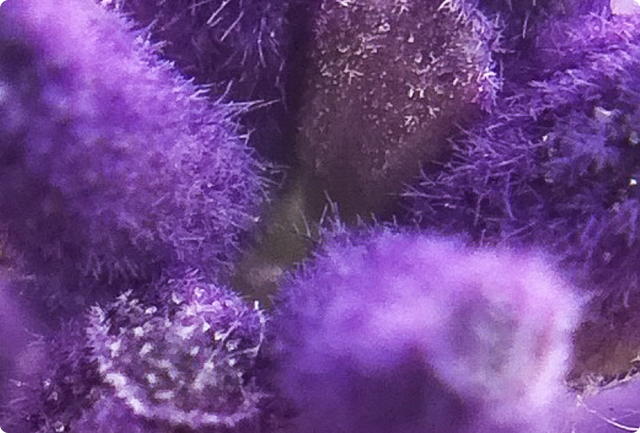About the Oil
Licorice root comes from Glycyrrhiza glabra, a flowering plant native to Southern Europe and parts of Asia. Sweet and earthy, the root has been cherished for millennia for both its distinctive flavor and its broad-spectrum health properties. Its therapeutic power comes from key bioactives like glabridin and isoliquiritigenin , which influence everything from immune modulation to digestive harmony and inflammation response.
Why You Would Use the Root
Licorice root is one of the most versatile botanicals in natural wellness. It may be used to:
- Calm inflammatory skin or respiratory issues
- Soothe acid reflux, ulcers, or gastrointestinal irritation
- Support adrenal and immune function under stress
- Balance hormones and ease menstrual discomfort
- Help fight microbial or viral threats
- Offer antioxidant and anti-aging skin support
Clinical Findings
| Study | Participants & Methods | Key Results | Reference |
|
Soothes Inflammation & Supports Immunity |
Studies on glycyrrhizin and glycyrrhetinic acid in viral and inflammatory conditions |
Licorice root helped calm inflammation by reducing key markers, while also supporting immune response in chronic conditions. |
Dastagir & Rizvi, 2016 |
Behind The Science (Made Simple)
Licorice root is like nature’s multitasker—working with your body at the hormonal, digestive, immune, and skin levels.
- Soothes from the inside out: Glycyrrhizic acid helps reduce stomach acid, calm ulcers, and support mucosal repair.
- Acts as a cellular shield: Its antioxidant activity protects against free radicals and oxidative stress.
- Fights microbes: Licorice targets harmful bacteria while leaving helpful flora untouched.
- Eases inflammation: Especially in the liver and skin, it helps downregulate pro- inflammatory markers.
- Supports hormone harmony: Glabridin mimics estrogen in a balanced, plant- based way—useful for skin tone, PMS, and menopause support.
How and Where It Grows
Licorice is cultivated in arid to semi-arid climates, thriving in deep, fertile soils in areas like Iran, China, and Central Asia. The plant can grow up to five feet tall and develops long taproots that are harvested after 3–4 years of growth. These roots are then dried and either used whole, powdered, or extracted for herbal medicine.
Use in Ancient Medicine
Licorice has a 4,000-year history in Traditional Chinese Medicine, Ayurveda, and Greco-Roman medicine. In TCM, it’s known as “Gan Cao” and used as a harmonizer in herbal formulas—helping to balance and moderate other herbs. In Ayurveda, it is known for vishaghna (detoxifying) and rasayana (rejuvenating) properties, particularly for calming excess Pitta and Vata.
Symbolism
Licorice symbolizes sweetness, balance, and healing resilience. Its unique ability to harmonize both the body and spirit has made it a staple in formulas for centuries. It stands for gentle strength—able to powerfully support wellness while tasting sweet and soothing.
INFORMATION provided is intended for informational purposes only and is not meant to diagnose, treat, cure, or prevent any disease. Statements have not been evaluated by Health Canada or the FDA. Please consult a qualified healthcare provider before using essential oils for therapeutic purposes.
References
- Dastagir, G. & Rizvi, M.A., 2016. Glycyrrhiza glabra L. (Liquorice). Pakistan Journal of Pharmaceutical Sciences, 29(5), pp.1727–1733.
- Tian, M., Yan, H. & Row, K.H., 2008. Extraction of glycyrrhizic acid and glabridin from licorice. International Journal of Molecular Sciences, 9(4), pp.571–577. https://doi.org/10.3390/ijms9040571
- Lu, C., Chen, J., Fu, W., Liu, Y., Lu, C., & Shi, J., 2021. Licorice: A Root of Central Nervous System Pharmacological Functions. Plants, 10(12), 2751. https://doi.org/10.3390/plants10122751
- Golmohammadii, A., Namjou, A., Heidarian, E. (2021). 'Evaluation of Hydroalcoholic Extract of Licorice Root (Glycyrrhiza glabra L.) on Wound Healing of Gastrotomized Male Wistar Rats: Histopathological Changes', Iranian Journal of Veterinary Surgery, 16(2), pp. 75-83. doi: 10.30500/ivsa.2021.258525.1232
- Wu, Y., Wang, Z., Du, Q., Zhu, Z., Chen, T., Xue, Y., Wang, Y., Zeng, Q., Shen, C., Jiang, C., Liu, L., Zhu, H., & Liu, Q. (2022). Pharmacological Effects and Underlying Mechanisms of Licorice-Derived Flavonoids. Evidence-based complementary and alternative medicine : eCAM, 2022, 9523071. https://doi.org/10.1155/2022/9523071
- Wahab, S., Annadurai, S., Abullais, S. S., Das, G., Ahmad, W., Ahmad, M. F., Kandasamy, G., Vasudevan, R., Ali, M. S., & Amir, M. (2021). Glycyrrhiza glabra (Licorice): A Comprehensive Review on Its Phytochemistry, Biological Activities, Clinical Evidence and Toxicology. Plants (Basel, Switzerland), 10(12), 2751. https://doi.org/10.3390/plants10122751








